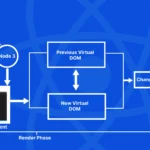Trade Financing’s Future: Immediate Edge’s Next Frontier
- 1 Understanding Trade Financing: A Brief Overview
- 1.1 The Role of Trade Financing in Global Commerce
- 1.2 Key Challenges in Current Trade Financing Practices
- 2 The Advent of Quantum Computing in Finance
- 2.1 Quantum Computing: What It Is and How It Works
- 2.2 Current Applications of Quantum Computing in Finance
- 3 The Intersection of Quantum Computing and Artificial Intelligence
- 3.1 The Synergy Between Quantum Computing and AI
- 3.2 How Immediate Edge Can Revolutionize Financial Models
- 4 Immediate Edge in Trade Financing: The Future Begins
- 4.1 Potential Applications of Immediate Edge in Trade Financing
- 4.2 Overcoming Trade Financing Challenges with Immediate Edge
- 5 The Road Ahead: Opportunities and Challenges
In the ever-evolving landscape of global trade, financing plays a crucial role in facilitating commerce between countries. As businesses expand their reach and engage in cross-border transactions, trade financing acts as a catalyst, providing the necessary support to navigate the complexities of international commerce. However, traditional trade financing practices often face significant challenges that hinder their effectiveness. As we look towards the future, emerging technologies, such as quantum computing and artificial intelligence (AI), hold immense promise to revolutionize the trade financing industry.
Understanding Trade Financing: A Brief Overview

Before delving into the possibilities that lie ahead, it is essential to grasp the fundamentals of trade financing. In simple terms, trade financing refers to the financial instruments and services that enable companies to conduct cross-border trade. These financing solutions can take various forms, including letters of credit, trade loans, invoice financing, and supply chain financing.
By providing access to funding during different stages of the trade cycle, trade financing helps to mitigate risks and bridge the gap between the exporter and importer. This essential component of global trade ensures the smooth flow of goods and services across borders, fostering economic growth and prosperity.
The Role of Trade Financing in Global Commerce
Trade financing acts as a cornerstone of global commerce, facilitating transactions between businesses and countries worldwide. It enables companies, both large and small, to engage in international trade by providing financial support for various activities.
One of the primary functions of trade financing is to reduce the risks associated with cross-border transactions. Through mechanisms like letters of credit, exporters can ensure that they will receive payment for their goods or services, even if the importer faces financial difficulties or fails to fulfill their contractual obligations. This guarantee helps to build trust and encourages businesses to explore new markets without fear of non-payment.
Moreover, trade financing also helps businesses manage cash flow effectively. By providing access to funds before the buyer makes payment, trade financing allows exporters to fulfill orders and cover production costs, thus preventing cash flow bottlenecks.
Key Challenges in Current Trade Financing Practices
While trade financing plays a crucial role in facilitating global commerce, it is not without its challenges. Traditional trade financing practices often suffer from inefficiencies, delays, and high costs.
One of the primary challenges is the extensive paper-based documentation involved in trade financing. The manual processing of trade documents, including invoices, bills of lading, and insurance certificates, can be time-consuming and prone to errors. This manual workflow often leads to delays and increases the risk of fraud.
Additionally, traditional trade financing practices heavily rely on trust among parties involved, which can limit access to financing for small and medium-sized enterprises (SMEs) and businesses in emerging markets. The lack of transparency and information asymmetry creates hurdles for these businesses, preventing them from fully participating in global trade.
Furthermore, the complexity of regulatory and compliance requirements poses another challenge in trade financing. Different countries have varying rules and regulations regarding trade finance transactions, leading to confusion and increased costs for businesses engaged in international trade.
The Advent of Quantum Computing in Finance
As the world of finance continues to evolve, technological innovations are reshaping the industry. One such groundbreaking advancement is the emergence of quantum computing. Quantum computing harnesses the principles of quantum mechanics to revolutionize computation, offering unprecedented speed and power.
Quantum Computing: What It Is and How It Works
At its core, quantum computing leverages the fundamental properties of quantum mechanics, specifically quantum bits or qubits, to perform complex calculations. Unlike classical computers that use bits as basic units of information (either 0s or 1s), qubits can exist in multiple states simultaneously, thanks to a phenomenon known as superposition.
This superposition allows quantum computers to explore numerous computational possibilities simultaneously, leading to exponential speed-ups in certain calculations. Additionally, quantum computers can leverage entanglement, another intriguing quantum property, to establish correlations between qubits, enabling more robust computations and solving complex problems efficiently.
Current Applications of Quantum Computing in Finance
While quantum computing is still in its early stages, several financial institutions and researchers have already begun exploring its potential applications. One of the primary areas of interest is portfolio optimization, where quantum algorithms can help identify optimal investment strategies amidst a vast array of possibilities.
Furthermore, quantum computing shows promise in solving complex optimization problems in risk management and asset pricing. By leveraging the computational power of qubits, financial institutions can improve their risk assessment models and make more informed investment decisions.
It is important to note that while quantum computing holds great potential, widespread adoption in the finance industry is still a few years away. Addressing technical challenges and the creation of quantum-safe cryptographic systems are among the key factors that need to be addressed before quantum computing becomes mainstream in finance.
The Intersection of Quantum Computing and Artificial Intelligence
In recent years, artificial intelligence (AI) has made significant strides, transforming various industries, including finance. AI algorithms are capable of analyzing vast amounts of data, identifying patterns, and making intelligent decisions. The marriage of quantum computing and AI, often referred to as Immediate Edge, has the potential to push the boundaries of innovation even further.
The Synergy Between Quantum Computing and AI
ImmediateEdgetrading.com presents a unique synergy by combining the computational power of quantum computers with the intelligence of AI algorithms. This fusion can enable quantum machines to tackle complex problems more efficiently and effectively than their classical counterparts.
Immediate Edge algorithms have the potential to enhance machine learning models, enabling them to process significantly larger datasets and uncover hidden patterns that could revolutionize financial modeling. Moreover, quantum neural networks, inspired by the principles of quantum physics, hold promise in solving optimization and classification problems more effectively.
How Immediate Edge Can Revolutionize Financial Models
Financial models are the backbone of various activities in finance, including risk management, asset pricing, and portfolio optimization. By leveraging the capabilities of Immediate Edge, these models can be fine-tuned to achieve greater accuracy and efficiency.
For instance, quantum machine learning algorithms can identify complex relationships and dependencies within financial data, resulting in more accurate predictions and better risk assessment. This enhanced understanding of market dynamics can help financial institutions make informed decisions and develop more robust investment strategies.
Besides improving existing financial models, Immediate Edge can also pave the way for the development of entirely new models. The ability to process vast amounts of data in parallel and uncover intricate patterns can lead to the discovery of new investment opportunities and innovative financial products.
Immediate Edge in Trade Financing: The Future Begins
As we look forward to the future, trade financing is poised to benefit significantly from the integration of Immediate Edge. The unique capabilities of these emerging technologies offer a new frontier for trade financing, addressing the challenges faced by traditional practices and unlocking new possibilities.
Potential Applications of Immediate Edge in Trade Financing
One of the potential applications of Immediate Edge in trade financing is in the realm of risk assessment and fraud detection. Immediate Edge algorithms can help analyze data from various sources, including trade documents and transaction histories, to identify patterns indicative of potential risks or fraudulent activities.
- With the ability to process vast amounts of data and uncover hidden correlations, Immediate Edge can provide more accurate risk assessments, enabling financial institutions to make informed lending decisions. This enhanced risk assessment can also lead to reduced costs and increased efficiency in trade financing operations.
- Fraud detection is another area where Immediate Edge can make a significant impact. By analyzing patterns and anomalies in trade data, Immediate Edge algorithms can identify potential red flags that might indicate fraudulent activities. This proactive approach to fraud detection can help prevent financial losses and mitigate risks for both financiers and businesses engaged in trade.
Another potential application lies in trade financing optimization. Immediate Edge algorithms can help optimize trade financing processes, improving efficiency and reducing costs. By analyzing trade data, market conditions, and various financing options, Immediate Edge can provide recommendations for optimal financing solutions tailored to the specific needs of businesses.
Overcoming Trade Financing Challenges with Immediate Edge
Trade financing faces various challenges, as discussed earlier, including complex documentation processes and limited access to financing for SMEs. Immediate Edge can offer solutions to these challenges, facilitating a more efficient and inclusive trade financing ecosystem.
With its ability to process and analyze vast amounts of data, Immediate Edge can automate and streamline the trade documentation process, reducing errors and improving efficiency. Using Natural Language Processing (NLP) and machine learning algorithms, Immediate Edge can extract relevant information from trade documents, ensuring accurate and timely processing.
Furthermore, Immediate Edge can help address the issues of limited financing access for SMEs and businesses in emerging markets. By leveraging the power of AI algorithms, Immediate Edge can assess creditworthiness based on alternative data sources such as transaction histories, social media profiles, and supply chain data. This expanded evaluation criteria can provide a more holistic view of businesses, enabling financial institutions to extend financing to a broader range of entities.
The Road Ahead: Opportunities and Challenges
As we explore the future implications of Immediate Edge in trade financing, it is important to consider both the opportunities and challenges that lie ahead.
The Potential Impact of Immediate Edge on Global Trade
The integration of Immediate Edge in trade financing has the potential to reshape the global trade landscape. By addressing key challenges, such as limited financing access and manual processing inefficiencies, Immediate Edge can foster increased trade activities and promote economic growth.
Moreover, the enhanced risk assessment capabilities offered by Immediate Edge can lead to more secure and reliable trade financing operations. Businesses can have greater confidence in participating in cross-border transactions, knowing that risks are effectively evaluated and managed.
Additionally, the optimization potential of Immediate Edge can unlock new opportunities for businesses and financiers alike. Improved efficiency and reduced costs can help businesses expand their operations and explore new markets, while financial institutions can offer more tailored and competitive financing solutions.
Ethical and Security Considerations in Immediate Edge Implementation
As with any emerging technology, the implementation of Immediate Edge in trade financing raises ethical and security concerns that need to be addressed. Immediate Edge algorithms rely on vast amounts of data, which can raise privacy concerns if not handled responsibly.
Ensuring the security and integrity of trade data is critical in maintaining trust and preventing unauthorized access or manipulation. Robust encryption mechanisms and strict data governance frameworks must be in place to safeguard sensitive information throughout the trade financing process.
Furthermore, ethical considerations surrounding the use of AI algorithms must be carefully evaluated. Transparency, fairness, and accountability should be at the forefront of Immediate Edge implementation to prevent biases and ensure ethical decision-making.
In conclusion, the future of trade financing lies at the intersection of quantum computing and artificial intelligence. Immediate Edge holds immense promise in revolutionizing the trade financing industry, overcoming traditional challenges, and unlocking new opportunities. With the potential to enhance risk assessments, optimize processes, and promote greater inclusivity, Immediate Edge is poised to become the next frontier in trade financing. As we navigate the road ahead, it is crucial to address ethical and security considerations, ensuring responsible and equitable implementation. The fusion of Immediate Edge and trade financing marks an exciting chapter in the evolution of global commerce, with far-reaching implications for businesses, financial institutions, and economies worldwide.


















